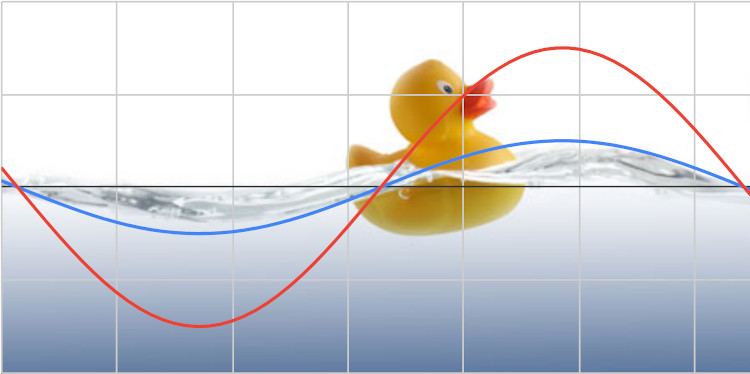What does a Reactor Protect?
- By Kevin Abma
Line reactors are installed between your VFD and the power source.
They protect the VFD.
Load reactors are installed between your VFD and your motor.
They protect the motor.
To explain this, picture a bath tub. The water represents the electricity. The waves in the bath tub represent the movement of the electricity as a sine wave. One end of the bath tub is your motor and the other is the VFD.
Variable frequency drives (VFDs) do not output constant power. At the micro level, they create pulses of electricity. When you zoom out, all of those little pulses look like a consistant sine wave that you would expect to see.
Electricity flows as a sine wave down the wires. Every pulse of electricity creates a ripple of electricity. Those little waves can bounce off the walls and travel in the opposite direction.
In the bath tub, if the little waves are created at just the right time, they add together to become bigger waves. Eventually, those big waves will become too big and water will splash out of the tub.
When electricity cannot be absorbed, it will bounce and start traveling the opposite direction. The height of the wave is called the amplitude, or amperage for electricity specifically. Electrical wires are rated for a maximum amount of amperage. If the amperage exceeds this then the electricity will "spill" out of the wire by burning holes in the wire's insulation.
The biggest waves occur when the wave hits a wall, which in our example, would be your motor or the VFD. If the wave is too large when it hits your motor, it will burn holes in the motor's electrical windings. Eventually, this will cause the motor to internally short out.
A reactor inhibits large waves from forming. With no large waves, your motor will be safe.
When to Install a Reactor
Load Reactor
If there is a long distance between your VFD and motor then you should use a reactor. The longer the distance, the larger the harmonic waves will become. Generally, if there is over 100 feet of wire between the VFD and the motor then you should install a load reactor. Some motors can handle up to 300 feet of wire if they meet the NEMA MG-1 Part 31 standard.
Line Reactor
If your input power is prone to having spikes then installing a line reactor will smooth out that spike to help protect your VFD. If you have multiple VFDs connected to the same power source then adding a line reactor in front of each one of them will prevent "cross talk" between the drives.
Lenze's Recommendation
Lenze published a recommendation on when to use a reactor. This publication can be found here.



